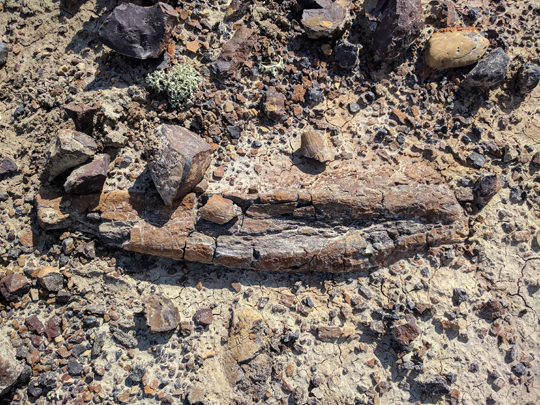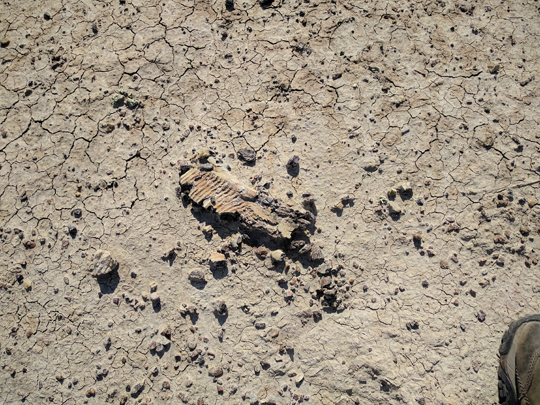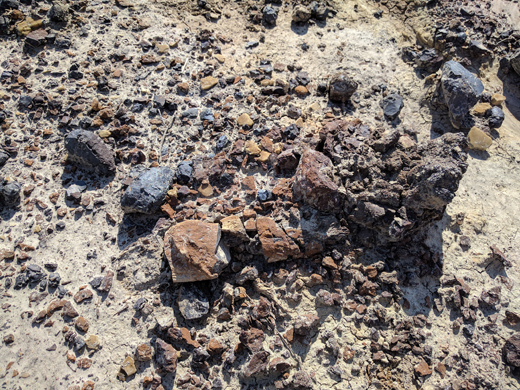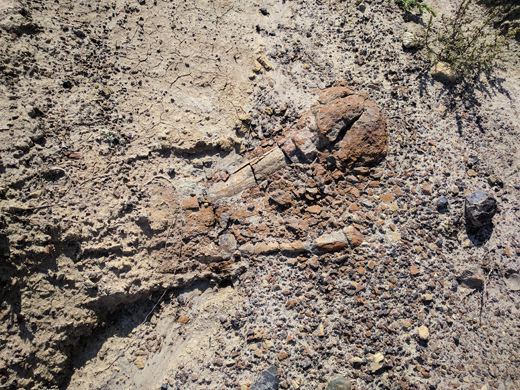Dinosaur Fossils on Mars – Not Quite but a New Fossil Discovery
Students Looking to Test Mars Rovers Discover Dinosaur Fossils
University students looking for a suitable landscape to test robots to take part in the exploration of Mars, have stumbled across the remains of a duck-billed dinosaur eroding out of the landscape. Dinosaur bone discovery made by students.
Members of the University of Saskatchewan Space Design Team (USST), were visiting Midland Provincial Park in southern Alberta (Canada), in early June, scouting for suitable sites for an upcoming robotics contest. The team were looking to identify terrain that resembled that found on the surface of Mars, the object of the competition being to test designs for Mars Rovers – robotic vehicles that could help with further exploration of the red planet. What the team did not anticipate, was that their search would lead to the discovery of several fossilised bones from a Late Cretaceous hadrosaurid.
Duck-billed Dinosaur Bones Discovered
Picture credit: Adam McInnes
Dinosaur Bone Discovery
The students were exploring the area around Drumheller in a bid to identify sites suitable for hosting the first Canadian International Rover Challenge, a globally significant event, with a number of universities and institutions showcasing their robotics and automated vehicles that could help future scientific missions to Mars. The team were looking for locations which were very dry, with lots of rocky terrain, plenty of sand and a mixture of different stone sizes coupled with a minimal of vegetation. For a palaeontologist, areas with lots of rocky exposures, very few plants and which are subject to high levels of erosion, can also be great places to find fossils, especially if the rock is sedimentary in nature. This part of Alberta is famous for its extensive exposures of Upper Cretaceous strata and numerous dinosaurs have been identified from their fossilised remains.
An Eroded Hadrosaurid Jaw Bone from the Site
Picture credit: Adam McInnes
The picture above shows a very weathered portion of a jaw bone from a duck-billed dinosaur. The grooves seen in the fossil equate to locations in the jaw for the dental battery, the rows of tightly packed teeth that helped this herbivore process the coarse plant-material such as pine needles that this type of dinosaur consumed. Hadrosaurid fossils are probably the most common large dinosaur fossils to be found in this part of Canada, team members at Everything Dinosaur, whilst working with Royal Tyrrell Museum staff have come across several specimens themselves. Often the fossils are too weathered and fragmentary to permit extraction and formal identification down to the species level.
Severely Weathered Dinosaur Bones
A Severely Weathered Dinosaur Fossil Bone
Picture credit: Adam McInnes
Conservation officials from the Alberta Parks Department and staff from the Royal Tyrrell Museum (Drumheller), were able to assist the USST members and helped them to identify suitable venues for the robotic vehicle tests. The locations chosen were well away from sites of significant geological interest, after all, it is hardly a valid test for a potential Mars Rover to be able to ascend and descend a dinosaur bone, that is one object that these machines are not going to encounter on Mars.
A Femur (Thigh Bone) from a Hadrosaurid
Picture credit: Adam McInnes
USST President, Danno Peters explained that whilst discovery dinosaur bones certainly generated a degree of excitement amongst the group, none of the USST members were thinking of changing their careers and becoming palaeontologists. Plans are already well underway for the 2018 Mars Rover competition and the USST team were looking forward to pushing their designs to the limit in even more challenging terrain.
Everything Dinosaur acknowledges the help of the media team at the University of Saskatchewan for their help in the compilation of this article.
Visit the award-winning Everything Dinosaur website: Everything Dinosaur.





